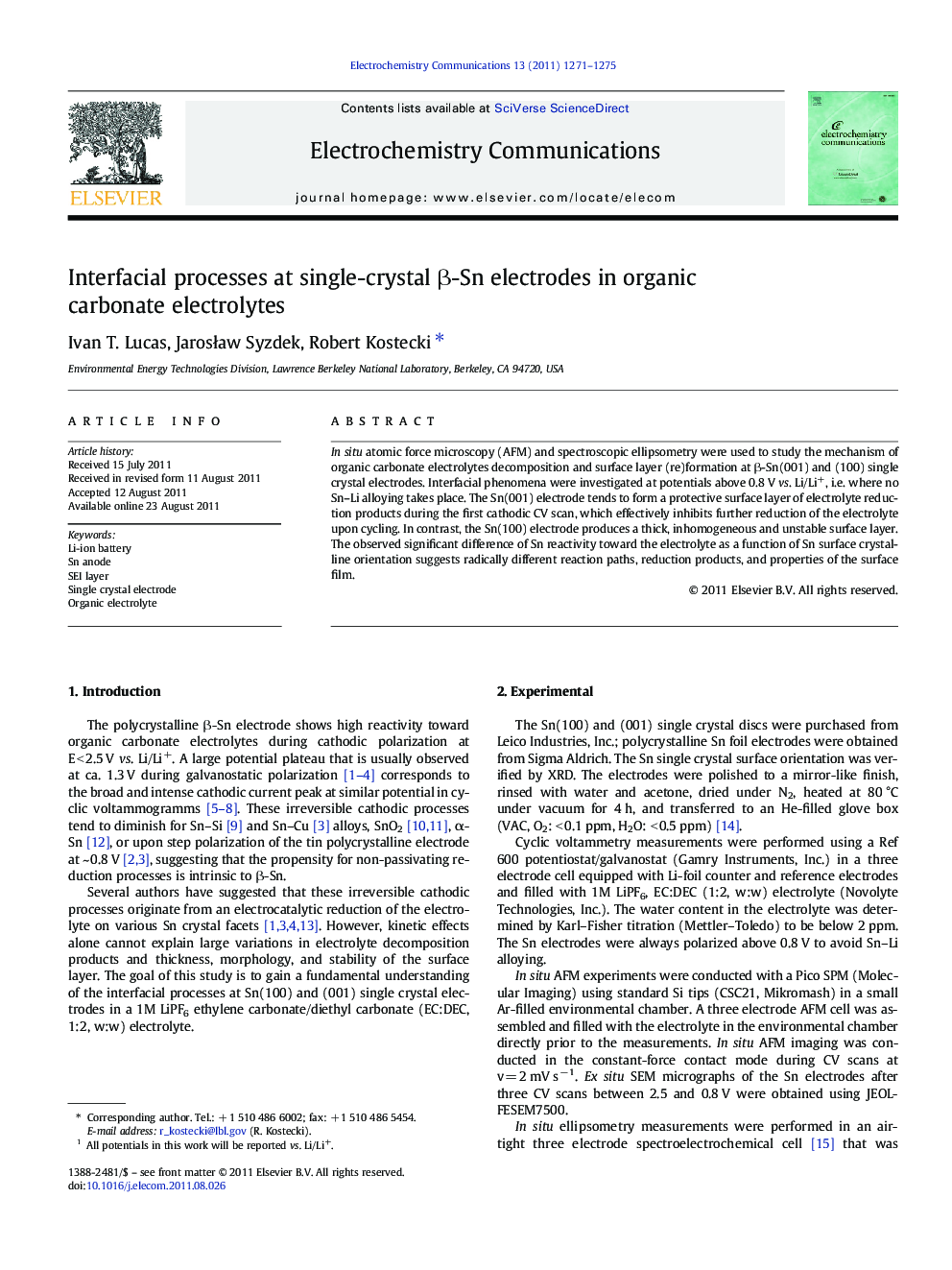| Article ID | Journal | Published Year | Pages | File Type |
|---|---|---|---|---|
| 180136 | Electrochemistry Communications | 2011 | 5 Pages |
In situ atomic force microscopy (AFM) and spectroscopic ellipsometry were used to study the mechanism of organic carbonate electrolytes decomposition and surface layer (re)formation at β-Sn(001) and (100) single crystal electrodes. Interfacial phenomena were investigated at potentials above 0.8 V vs. Li/Li+, i.e. where no Sn–Li alloying takes place. The Sn(001) electrode tends to form a protective surface layer of electrolyte reduction products during the first cathodic CV scan, which effectively inhibits further reduction of the electrolyte upon cycling. In contrast, the Sn(100) electrode produces a thick, inhomogeneous and unstable surface layer. The observed significant difference of Sn reactivity toward the electrolyte as a function of Sn surface crystalline orientation suggests radically different reaction paths, reduction products, and properties of the surface film.
► Sn reactivity in organic electrolytes varies with surface crystalline orientation. ► Sn(100) single crystal electrode does not form an effective passivation layer. ► Sn(001) single crystal electrode develops a thin homogeneous passivation layer. ► Different reaction paths and electrolyte reduction products on Sn crystal facets. ► Sn interfacial stability can be achieved through optimizing the surface structure.
